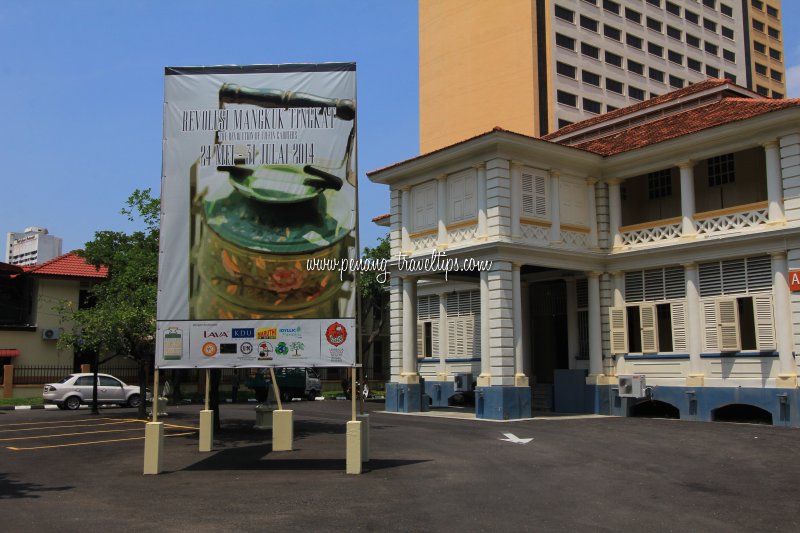 Tiffin carrier exhibition (9 June 2014)
Tiffin carrier exhibition (9 June 2014)
The Revolution of Tiffin Carriers is an exhibition held at the Penang Museum at Macalister Road. It is originally planned to run until July, but may be extended to August. The tiffin carriers are from the collection of Prakash Jakathesan and his wife Punita Mutiah.
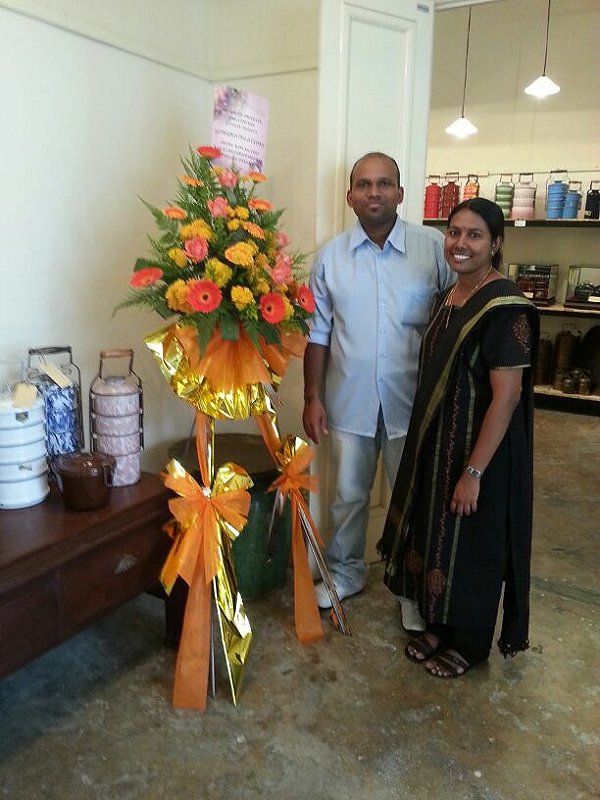 Prakash Jakathesan and wife, Punita Mutiah
Prakash Jakathesan and wife, Punita Mutiah© Prakash Jakathesan
Prakash and Punita started collecting these food containers since 2007. Their ensemble of 185 tiffin carriers has earned them a spot on the Malaysia Book of Records. Their entry into the book was officiated by Penang Deputy Chief Minister II, Professor Dr. P. Ramasamy on 10 May, 2014. The exhibition was then opened to the public by Penang Municipal Council Recreation, Tourism and International Affairs Department director Mohamed Akbar Mustapha who was representing council president Datuk Patahiyah Ismail, on 24 May, 2014.
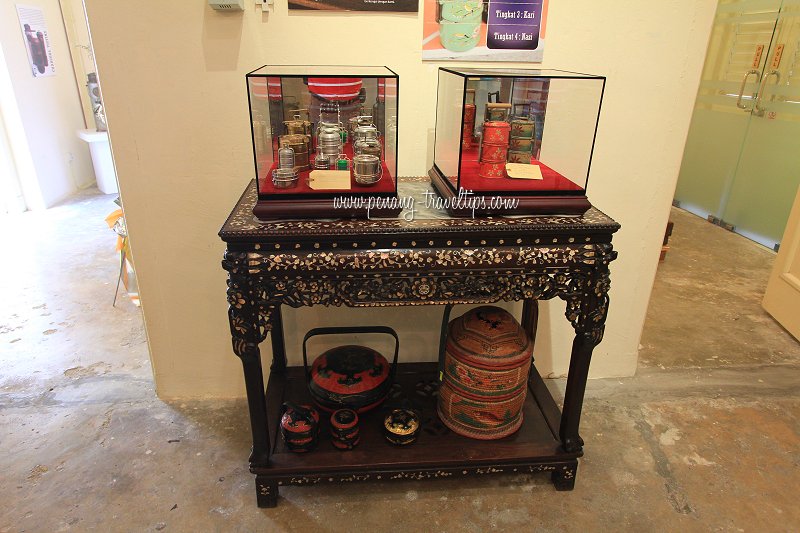 Diminutive tiffins and Nyonya baskets (siah3nah2) (9 June 2014)
Diminutive tiffins and Nyonya baskets (siah3nah2) (9 June 2014)
Known in Malay as mangkuk tingkat
 and in Penang Hokkien as wna1can2
and in Penang Hokkien as wna1can2  , tiffin carriers are stacked food containers that were popular all over the world. Even today, it is being used for transporting food by home food caterers.
, tiffin carriers are stacked food containers that were popular all over the world. Even today, it is being used for transporting food by home food caterers.Tiffin carriers are used in many countries. In India, where they are known as dabbawalla, tiffin carriers continue to be popularly used as food containers. Many of the enamel tiffin carriers were made by European manufactuers. Among the countries producing them include Czechoslovakia, Sweden, Austria, Hungary, and Germany. Nowadays, most of the tiffins are made of stainless steel or aluminium, and come from Thailand, China and India.
The tiffin carriers favoured by the Straits Chinese community were also manufactured in Europe. One side carries a floral motif while the other was painted with vernacular terms such as Slamat Pakkey (Happy Using), Slamat Angkat (Happy Carrying) and Slamat Makan (Happy Eating). These have become collectors items today.
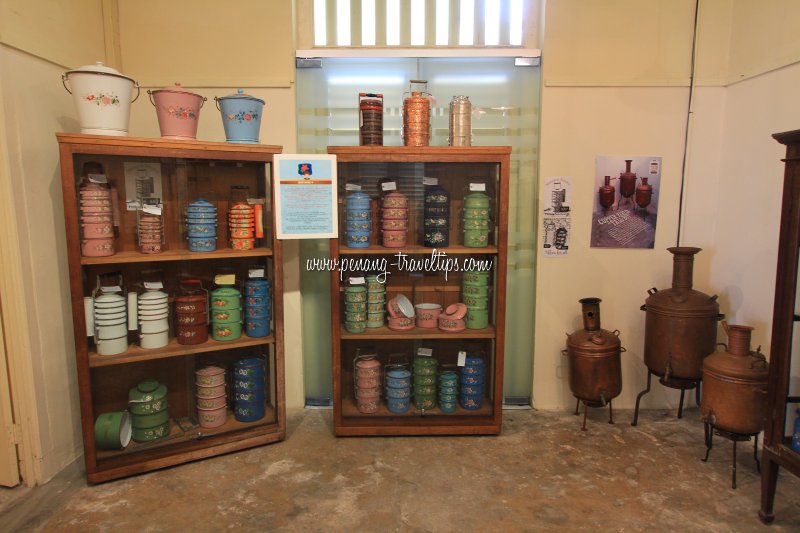 Peranakan tiffin carriers and copper heaters (6 May 2014)
Peranakan tiffin carriers and copper heaters (6 May 2014)
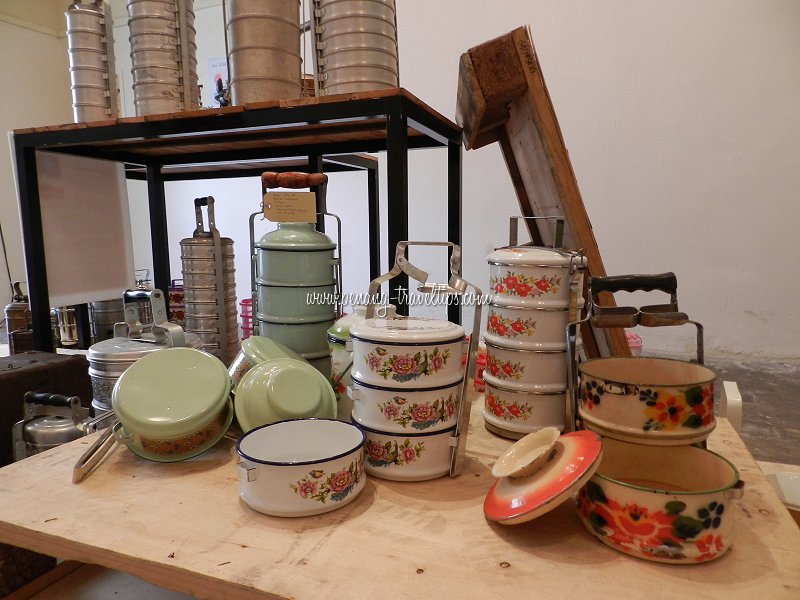 Tiffin carrier with floral designs (9 June 2014)
Tiffin carrier with floral designs (9 June 2014)
According to Mr Prakash, the oldest tiffin carrier in his collection was made in 1870. It is a charcoal tiffin, meaning food placed inside this carrier can be warmed up by charcoal at the bottom, so it stays hot when served.
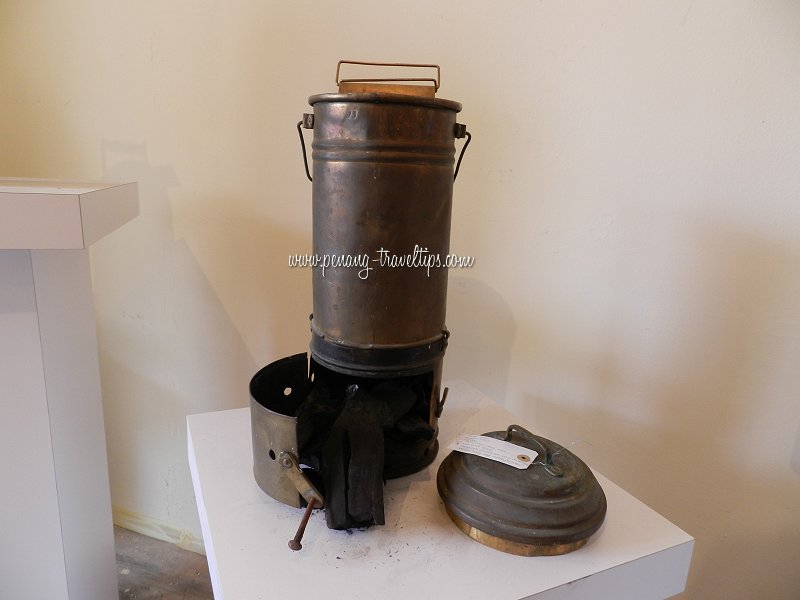 The charcoal-bearing tiffin carrier (9 June 2014)
The charcoal-bearing tiffin carrier (9 June 2014)
Tiffins grew in popularity in the first half of the 20th century. The majority of the Baba Nyonya tiffin carriers were made between 1920 and 1940. By the 1970s, their popularity declined as such carriers are replaced by plastic containers which are rust proof. Nevertheless, tiffin carriers have not completely disappeared from supermarket shelves, and are still sold in department stores and shops selling kitchenware. Nowadays, apart from plasticware, the most common tiffins are made of stainless steel. Some of the modern ones have a thermal insulation to keep food warm.
In order to carry food about with minimum spillage, one has to follow a certain procedure when packing a tiffin. Dry food, such as rice, is usually placed at the bottom bowl, while wet item such as curry or soup, go to the top bowl. This is because the top bowl is the most tightly sealed, and should there be spillage, it is less likely to reach the floor.
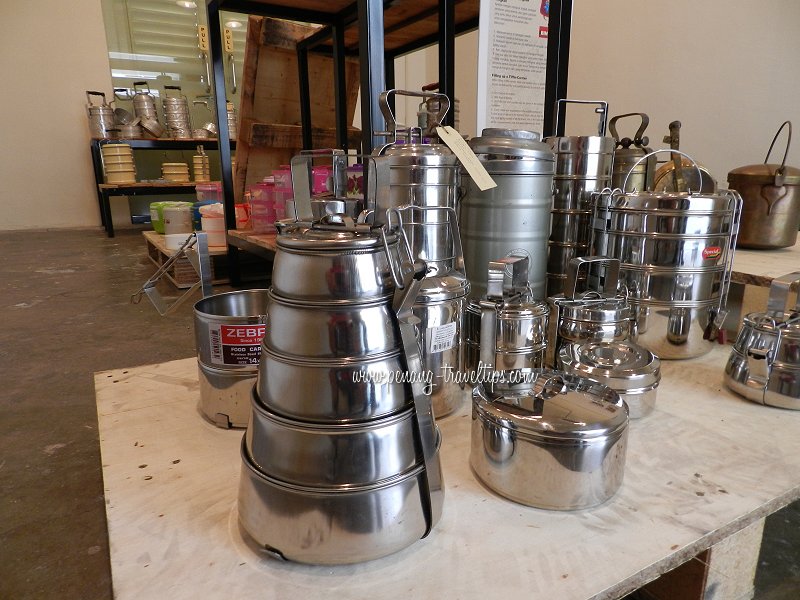 Stainless steel tiffin carriers in a multitude of designs (9 June 2014)
Stainless steel tiffin carriers in a multitude of designs (9 June 2014)
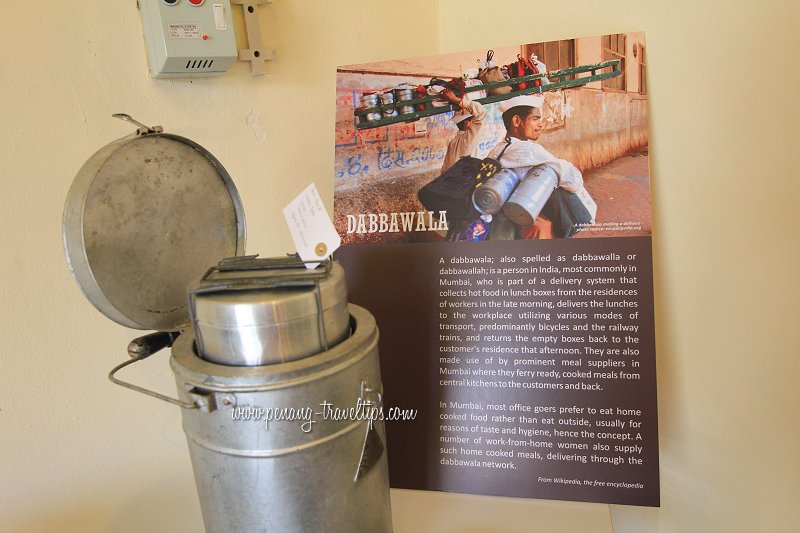 Dabbawalla, the Indian tiffin carrier (9 June 2014)
Dabbawalla, the Indian tiffin carrier (9 June 2014)
Tiffin Exhibition at the Penang Museum
The tiffin exhibition at the Museum @ Macalister is split into five sections.Section A shows a display of early tiffin carriers. They range from mud clay pots to those made of iron, brass and enamel. There is also a video screening of Baba Michael Cheah explaining the use of the tiffin carriers by the Penang Baba Nyonya community.
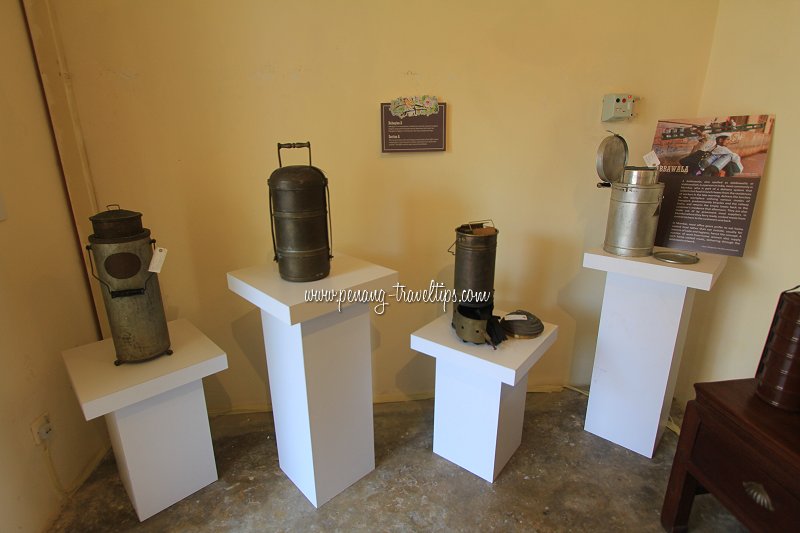 Brass tiffin carriers (9 June 2014)
Brass tiffin carriers (9 June 2014)
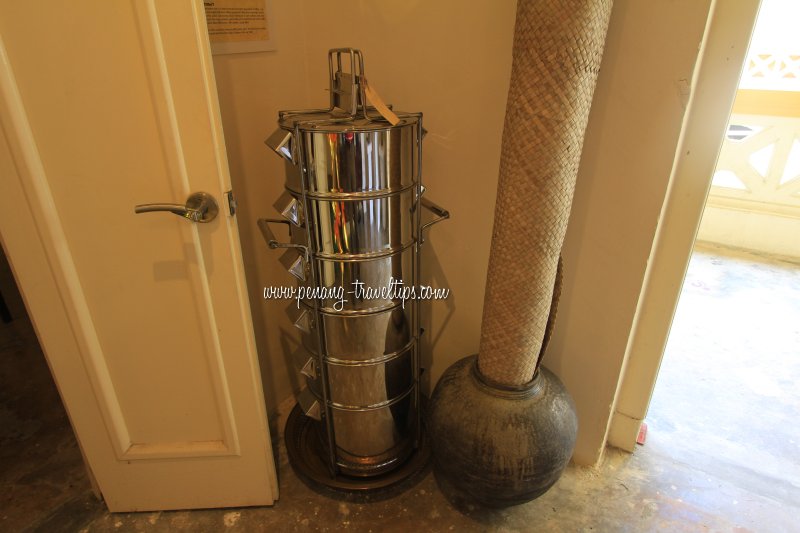 Giant-size food carrier (9 June 2014)
Giant-size food carrier (9 June 2014)
Section B provides an insight into the various tiffin carriers used in Malaya in the early 20th century, particularly between the 1920s leading up to the Second World War period, when tiffins were in vogue. Some of the exquisite specimens from this period include tiffins made in Czechoslovakia and other European countries.
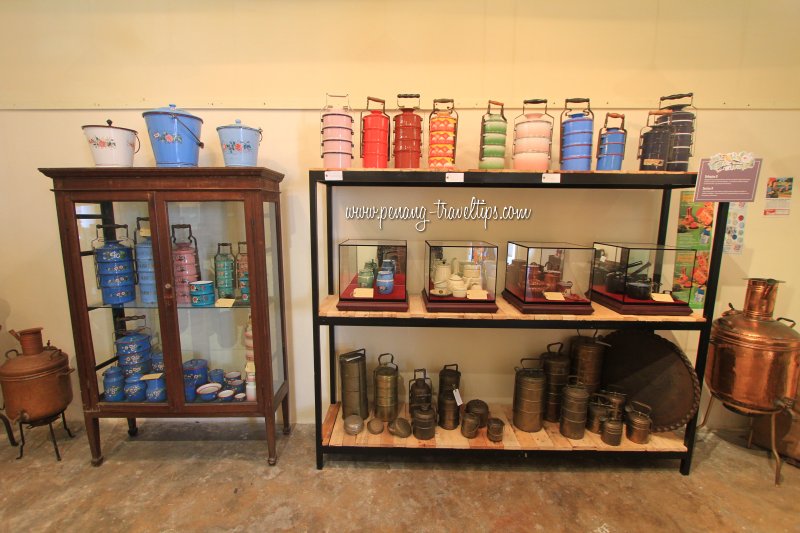 European and Peranakan tiffin carriers (9 June 2014)
European and Peranakan tiffin carriers (9 June 2014)
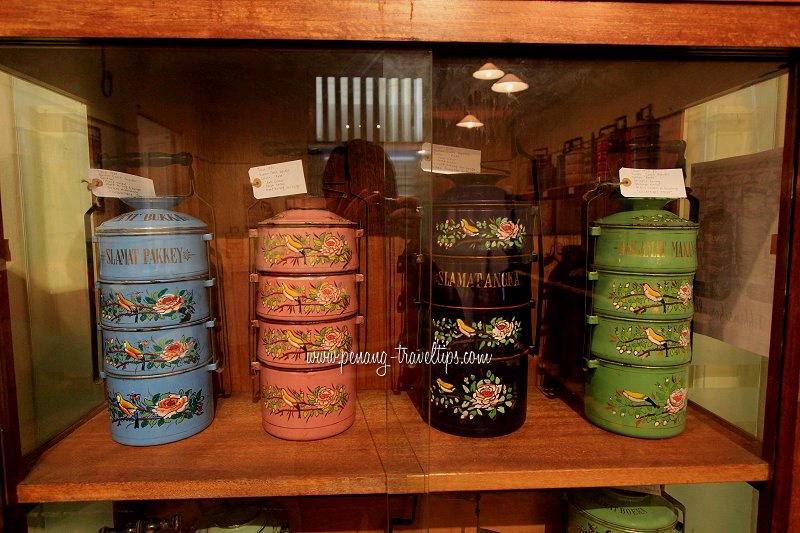 Tiffin with Greetings used by the Baba Nyonya in Penang (9 June 2014)
Tiffin with Greetings used by the Baba Nyonya in Penang (9 June 2014)
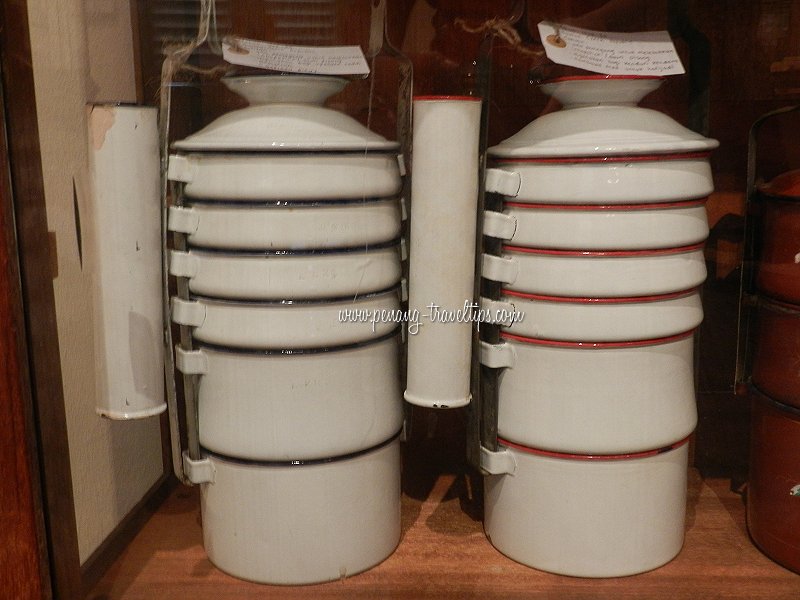 Tiffin carrier for auspicious (right) and inauspicious (left) events (9 June 2014)
Tiffin carrier for auspicious (right) and inauspicious (left) events (9 June 2014)
Section C showcases the design of tiffin carriers from the 1940s to the 50s. Apart from the European manufacturers, there were also tiffin manufacturers from Japan and Hong Kong producing such food containers during this period. Those made in Japan during the post war period often have the words "Occupied Japan" printed at their bottom.
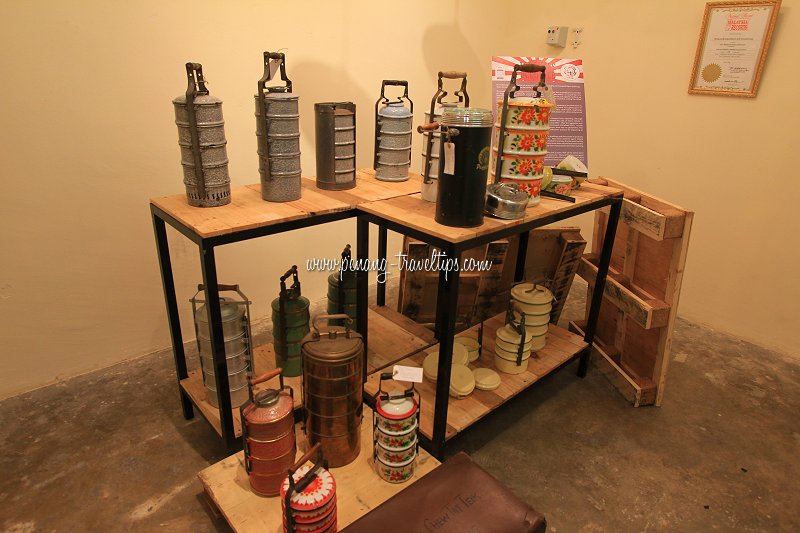 Early modern tiffins (9 June 2014)
Early modern tiffins (9 June 2014)
Section D displays tiffin carriers from the 1960's right up to present times. The cream-coloured tiffin carriers with green trimmings was common during the 60s and 70s, while modern ones are made of aluminium, stainless steel, plastic and fibreglass.
Section E of the exhibition shows a selection of rare and unusual tiffin carriers. Among these are giant-size carriers, those with handle to hold the cutleries, and those stacked up in decreasing sizes.
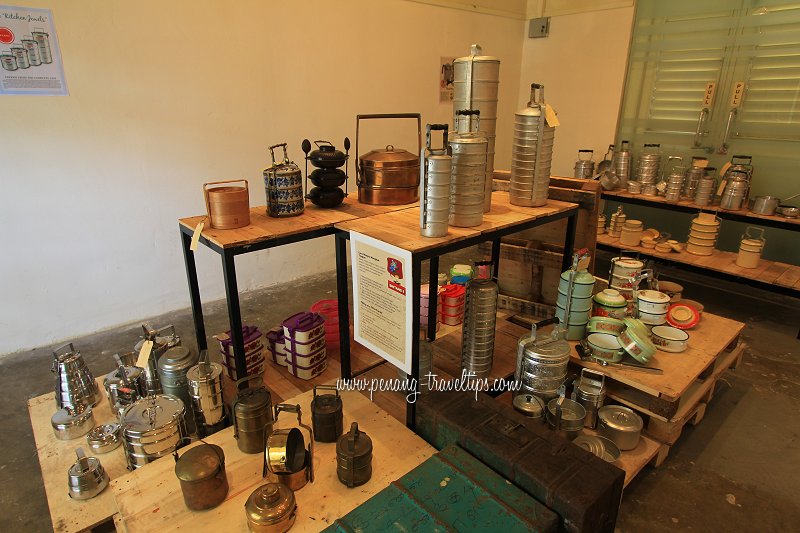 Modern and unusual tiffins (9 June 2014)
Modern and unusual tiffins (9 June 2014)

Copyright © 2003-2025 Timothy Tye. All Rights Reserved.

 Go Back
Go Back